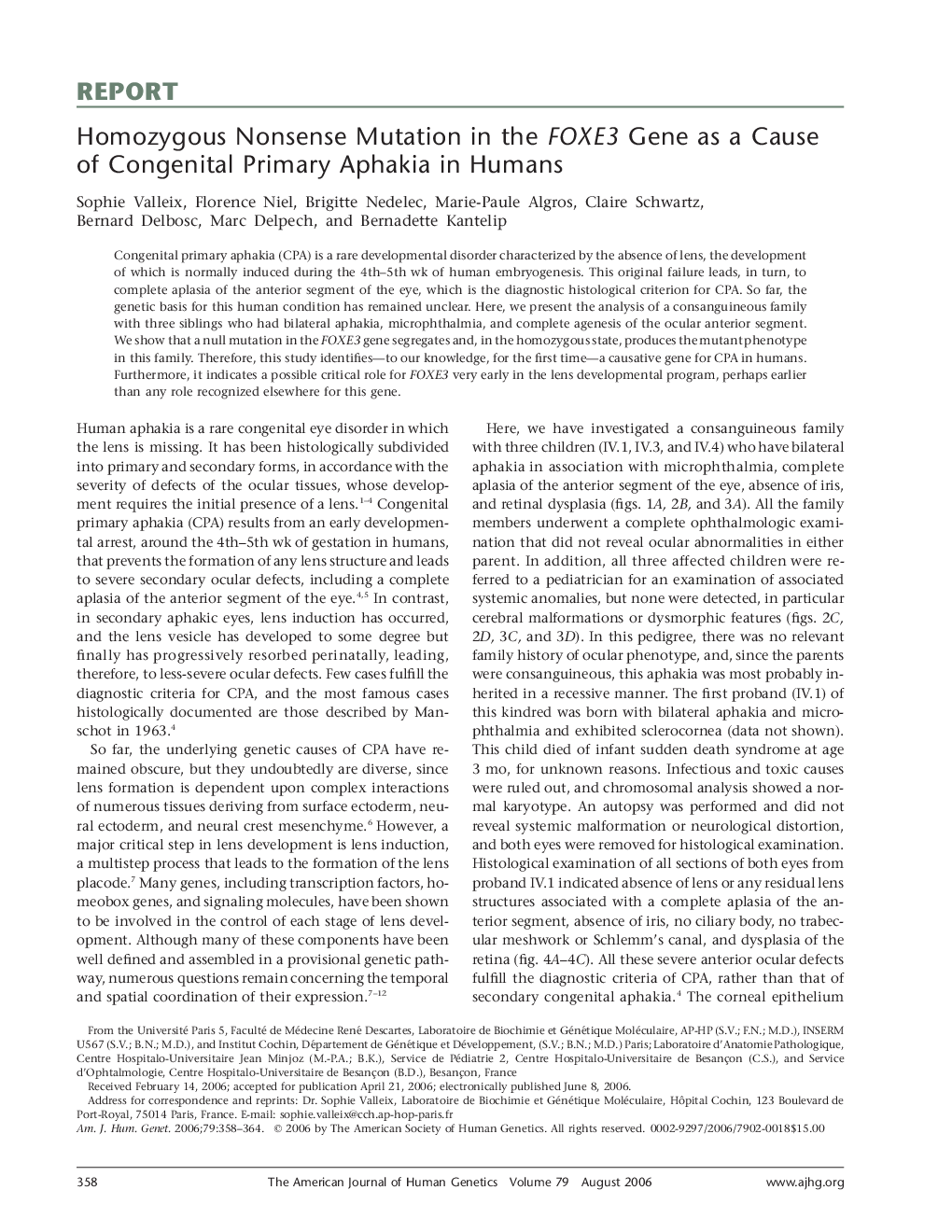| Article ID | Journal | Published Year | Pages | File Type |
|---|---|---|---|---|
| 2812250 | The American Journal of Human Genetics | 2006 | 7 Pages |
Congenital primary aphakia (CPA) is a rare developmental disorder characterized by the absence of lens, the development of which is normally induced during the 4th–5th wk of human embryogenesis. This original failure leads, in turn, to complete aplasia of the anterior segment of the eye, which is the diagnostic histological criterion for CPA. So far, the genetic basis for this human condition has remained unclear. Here, we present the analysis of a consanguineous family with three siblings who had bilateral aphakia, microphthalmia, and complete agenesis of the ocular anterior segment. We show that a null mutation in the FOXE3 gene segregates and, in the homozygous state, produces the mutant phenotype in this family. Therefore, this study identifies—to our knowledge, for the first time—a causative gene for CPA in humans. Furthermore, it indicates a possible critical role for FOXE3 very early in the lens developmental program, perhaps earlier than any role recognized elsewhere for this gene.
